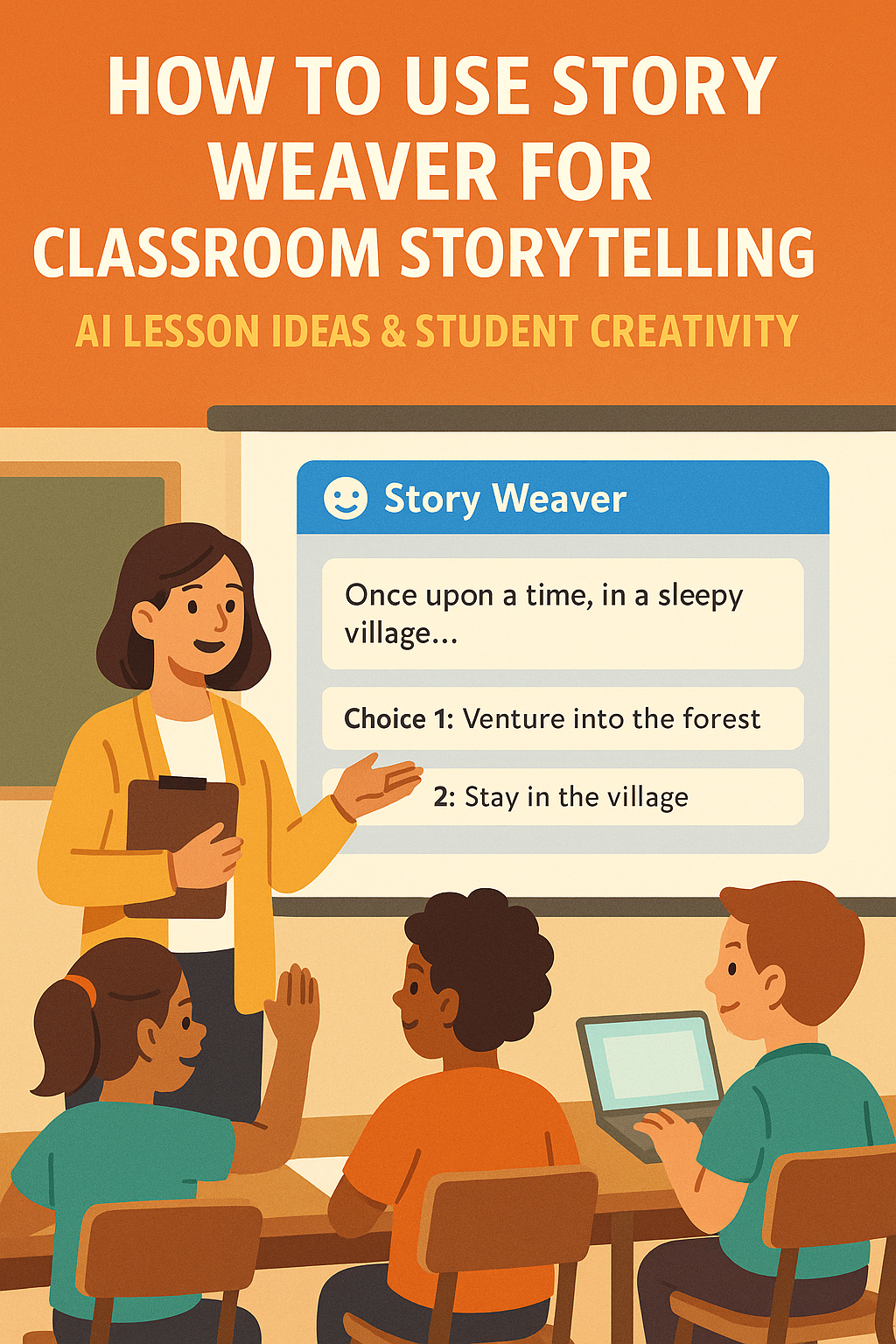Quick Guide: Use StoryWeaver as a guided co-author: model good prompts and constraints, capture drafts and reflections, and assess with a rubric that rewards originality, structure, and revision—not raw AI output.
1) Why classroom storytelling with AI?
- Engagement: Branching choices make plot, conflict and consequence visible.
- Voice development: Students compare AI drafts with their revisions to find their voice.
- Differentiation: Prompts can scaffold for reading levels and languages.
- AI literacy: Students learn to direct a model responsibly and reflect on its role.
2) Quick setup checklist
- Create student accounts on StoryWeaver
- Review terms of use and share with students
- Set clear expectations for AI attribution in your classroom
- Publish your AI usage policy (attribution + reflection required)
- Prepare a template: prompt → draft → edits → reflection per student
3) 45-minute storytelling lesson (HowTo)
- Kickoff (5m): Show an AI-assisted draft vs. a human-edited version. Clarify objectives and the rubric.
- Model prompting (10m):
You are creating a Grade 8 adventure story set in Johannesburg. Tone: hopeful, fast-paced. Constraints: show-don't-tell, age-appropriate, present tense, local details (taxi rank, skyline). End with 2 clear choices that branch the plot. - Draft & branch (15m): Students generate a scene, choose a branch, and produce a tighter second draft.
- Peer review (10m): Exchange drafts; give feedback on voice, structure, and clarity using the rubric.
- Reflect (5m): Submit a paragraph: "What did the AI add? What did I change and why?"
4) Assessment rubric (out of 20)
| Criterion | Excellent (4) | Good (3) | Developing (2) | Beginning (1) |
|---|---|---|---|---|
| Originality & voice | Distinctive voice; imaginative details | Mostly consistent voice | Uneven or generic voice | Minimal author voice |
| Structure & coherence | Clear arc; logical branching | Solid arc; minor gaps | Some plot holes; weak pacing | Confusing sequence |
| Revision quality | Substantive edits improve clarity/style | Meaningful edits | Surface edits | Little/no revision |
| Reflection & attribution | Transparent AI use; thoughtful reflection | Clear attribution | Partial attribution | No attribution |
| Mechanics | Near-flawless grammar/spelling | Minor errors | Frequent errors | Persistent errors |
5) Safety, ethics & transparency
- Use classroom-safe prompts; avoid sensitive topics
- Do not include personal data in prompts or drafts
- Require attribution line: "AI assisted the first draft; I revised the final."
- Keep an audit trail (prompt, drafts, edits, reflection) per student
6) Cross-curricular extensions
- History: Alternate endings from different historical decisions
- Science: Narrative explanations of experiments
- Languages: Translate a scene; compare tone and idioms
- Arts: Pair stories with student illustrations or voice recordings
FAQ
- Which grade levels is this best for?
- Upper primary through tertiary. Adjust prompt complexity and word counts by level. StoryWeaver is designed for children ages 3-12 but works great for older students learning creative writing.
- How do I handle group work?
- Track individual contributions via drafts and require a personal reflection from each student showing their specific edits and reasoning.
- Can students publish their stories?
- Yes—students can share stories with the class using StoryWeaver's sharing features. Obtain parental consent for minors before public posting.
- Is StoryWeaver safe for students?
- StoryWeaver is designed with child safety in mind. Use classroom-safe prompts, avoid personal data, and provide explicit guidance on acceptable use and attribution.
- What devices are required?
- Any browser-capable device works—computers, tablets, or smartphones. StoryWeaver runs entirely in the web browser.
Related reading:
- How AI Is Changing Storytelling for Children
- Behind the Scenes: How StoryWeaver Uses GPT
- View StoryWeaver pricing plans
